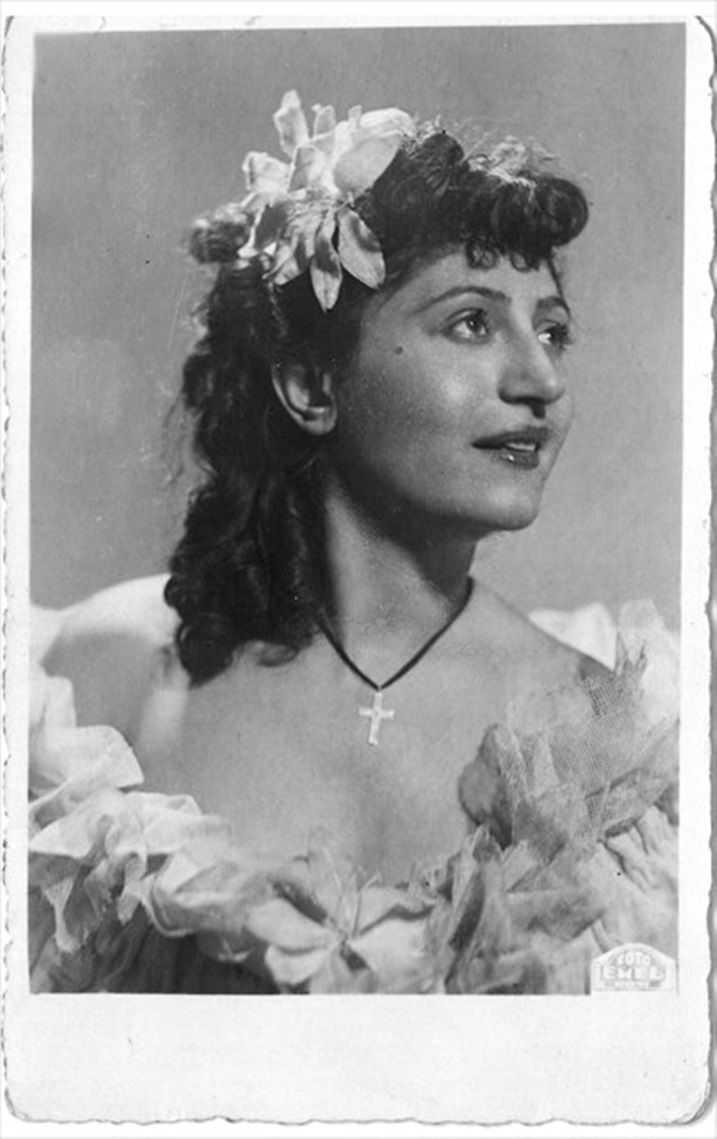Remembering the story of Martha, after whom the cove is named, may help us understand the latest developments on the beach. There seems to be a significant parallel between the perspective that objectifies and exploits a woman's body and the desire to possess and control a rare beach like Martha Cove. Martha Arat was a Lebanese Armenian woman, born in 1920. When her father was appointed to the Ottoman Bank, she came to Istanbul at a young age and attended Saint Benoit High School.
AYLİN VARTANYAN
I would like to start this article with a quote on colonialist perspective from the American novelist Ursula K. Le Guin, who is famous for her science fiction works and passed away in 2018. “Civilized Man says: I am Self, I am Master, all the rest is other--outside, below, underneath, subservient. I own, I use, I explore, I exploit, I control. What I do is what matters. What I want is what matter is for. I am that I am, and the rest is women and wilderness, to be used as I see fit.”
The shores of the Princes' Islands, located a short distance from Istanbul, have been in the spotlight for some time as areas of profitable transformation. Madam Martha Cove, one of the most beloved bays of Burgazada and a grade one natural site area, was opened for lease through an open bidding last month. The attempt to lease the cove, which has been able to remain a free public beach for years thanks to the struggle of the islanders, ignores a rule clearly stated in the Coastal Law No. 3621: "The coast is open to everyone's benefit with equality and freedom; no structures can be built here; walls, fences, railings, wire, ditches, piles, and similar obstacles cannot be created" (Article 6). Le Guin's proposition that both the female body and nature can be controlled as desired by those in power is once again confirmed in the events at Martha’s Cove.
While the islanders reacted to this situation, Adalar Municipality Mayor Ali Ercan Akpolat, who is also a diver, dived in Martha Cove to draw public attention and explain the contribution of seagrass beds to the ecosystem. Three years ago, the mucilage formation in the Sea of Marmara showed how important seagrass beds are in maintaining the balance of underwater oxygen levels and preventing coastal erosion. On May 3, a lawsuit was filed by the Adalar Municipality for the cancellation of the open bidding for the lease. The legal process is ongoing.

Remembering the story of Martha, after whom the cove is named, may help us understand the latest developments on the beach. There seems to be a significant parallel between the perspective that objectifies and exploits a woman's body and the desire to possess and control a rare beach like Martha Cove. Martha Arat was a Lebanese Armenian woman, born in 1920. When her father was appointed to the Ottoman Bank, she came to Istanbul at a young age and attended Saint Benoit High School. She took lessons from Arzumova, one of Istanbul's first ballet instructors, and is known as the city's first ballerina. Martha's curiosity about dancing and nature brought her both lifelong happiness and subjected her to countless rumors. When she married Berç Kazar and started living in Burgazada, Martha's connection with nature deepened. Martha, who had a deep love for the sea, rainwater, and seashells, and a devotion to all the beauties of nature, loved to dress in her own unique style, adorn her hair, and make jewelry from seashells for the island women. Bercuhi Berberyan described Martha in his book "My Love, Burgazada" (Adalı Publishing, 2010) as follows: "She wore bandanas tied to her forehead, which she casually let loose, wooden bracelets on her arms above the elbow, large hoop earrings on her ears, and anklets on her ankles. These fashions were not familiar to us, they didn't even exist in the world yet."
At one stage in her life, Martha started living in a fisherman's hut on the shore, formerly known as Halikya, to be closer to the sea. This was an unusual choice for her time. According to her friends, she would spend long hours in the rain, regardless of summer or winter, and would even collect rainwater in buckets, claiming that she was "bathing her body with God's water" without caring about the eyes watching her from afar. As we read these stories shared by her island friends, we can see that Martha's life energy and the strong bond between her body and soul reflect her free spirit. Unfortunately, we also read that some islanders did not appreciate these qualities of hers. Martha, who was subjected to hurtful rumors and gossip for a long time, was deeply affected and poisoned herself, leaving behind a note saying "You can relax now!" and passed away in 1986.

We don't know what happened on the island during the years she was living and what kind of rumors were spread. However, it is obvious that there is a patriarchal mentality that sees an Armenian woman's relationship with her own body and nature as a threat and operates the gossip mechanism at the expense of her life. As we also see in ecofeminist approaches, the practices of objectifying both women and nature are based on an insatiable greed and desire for possession. The patriarchal system that caused Martha's suicide is now targeting the place where she lived. It almost reminds us that no living being would be able to survive where she couldn’t have survived years ago. Fighting for this cove is synonymous with fighting for the legacy Martha left behind and for our own spaces of freedom.

